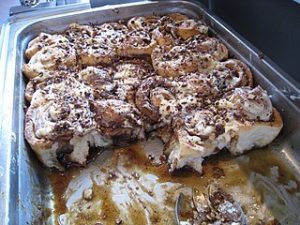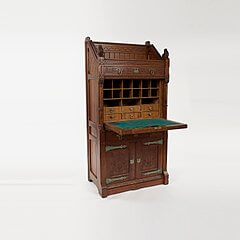 The clinic begins with the evil Mrs. Pinzetti shepherding little Karen through the room of experts, where her orthopedist refuses to return her smile. This is only the beginning of the process of dehumanizing her. At the end of the scene, Karen is left alone to remove the clothing that expresses her individuality and to put on the anonymous gown of someone who is merely the subject of a medical examination.
The clinic begins with the evil Mrs. Pinzetti shepherding little Karen through the room of experts, where her orthopedist refuses to return her smile. This is only the beginning of the process of dehumanizing her. At the end of the scene, Karen is left alone to remove the clothing that expresses her individuality and to put on the anonymous gown of someone who is merely the subject of a medical examination.
Scene 6: Clinic Begins
The hallway clock read eleven. Karen had been waiting outside the physical therapy room for fifteen minutes since following Mrs. Pinzetti from the classroom. She sat stiffly, unable to relax, legs numb from the hard seat of the wooden chair. The door opened. Mrs. Pinzetti looked down at her and cleared her throat. “Come this way with me, please,” she said.
Karen followed her through the main part of the room. The silver walking bars, which normally filled the center, had been pushed to the side and replaced by a treatment table. Her orthopedist, Dr. Lambert, stood beside it. As usual, the only bright spot in the room was the dusty print of Van Gogh’s Starry Night on the far wall.
He was still as tall and overweight as she remembered. Well over six feet tall, he could not button his white coat over his belly, or stretch his tie beyond his breastbone. He was bald, and in spite of having beads of sweat standing on his scalp, his hands were always frigid. His deep-set gray eyes were hidden behind thick, horn-rimmed glasses. He held a wooden pointer in his right hand and a binder containing his notes on her in his left. He always wore a gray suit with a matching tie. She wondered if he wore the same clothes every day, or if he had a closet full of identical gray pants, gray striped shirts, and gray ties. She was sure he owned only one pair of cufflinks, and these, too, were gray. He was no Ben Casey or Dr. Kildare. Rather, he was the opposite of the heroic medical doctor.
He had an audience of at least fifty other white coats. They sat in two groups, on folding chairs, facing each other across the middle of the room, with Dr. Lambert in the middle. They took notes, as he spoke.
She forced herself to smile at him, but he did not acknowledge her. He looked through her and said to the other professionals, “This is our next subject. She has cerebral palsy and dyslexia, so she is unable to describe her own condition, but you will find everything you need to know in the notes I provided.” Then he continued his lecture.
Karen remembered that, in the three years he had been her orthopedist, he had never asked her how she was, how she felt, or what she hoped to get from his treatments. He had never tried to get to know her as a person. She wondered whether he could remember anything about her without referring to his notes. He assumed she was unable to report or describe her own condition, and that only he could observe, analyze, report, and diagnose her needs.
Mrs. Pinzetti led Karen into one of the treatment areas, which had been curtained off for privacy. She said, “Please disrobe and put on the hospital gown. You can do that for yourself, so I will leave now.”
Original text ©2022 by Karen Lynn-Chlup. All rights reserved.







 This scene focuses on little Kitten’s memories of how confident she felt a few months before, and how desperately afraid she is now.
This scene focuses on little Kitten’s memories of how confident she felt a few months before, and how desperately afraid she is now. The story continues building toward a climactic confrontation with Mrs. Pinzetti, as little Kitten struggles to keep herself going in the face of the next day’s dreaded events.
The story continues building toward a climactic confrontation with Mrs. Pinzetti, as little Kitten struggles to keep herself going in the face of the next day’s dreaded events.